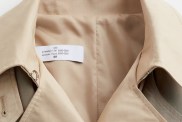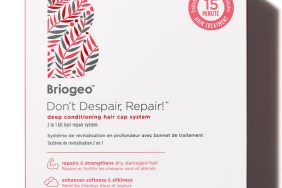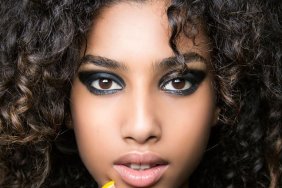Let’s face it, curly hair is…complicated. Frizz is like that unwanted friend that always follows you around and no matter how many hints you give it to scram, it just doesn’t get it. It refuses to make your life easier. So when we had a chance to try a new product that promised to calm down frizz and help condition locks, I was skeptical yet hopeful.
It may look an awful lot like a hair straightener, but don’t be fooled. In fact, rather than continuing to damage your hair, Inverse is a device that uses subzero temperatures to hydrate, condition and restore your hair’s health — not destroy it. It’s friend (to your hair), not foe.
It was invented by New Zealand hairstylist David Roe after he noticed the effect that ice water rinsing had on his curly-haired wife, who had done her fair share of battle with frizzy and unruly hair. The ice water rinse took care of that. Instead, her curls were shinier, lighter and bouncier. But how could Roe reproduce this result in the salon without dipping his client’s head in a basin of freezing cold water?
Roe set out to scientifically prove the effects of subzero temperatures on human hair. Turns out, it made hair smoother and softer, resulting in greater shine and more vibrant color and it also made it stronger and more defined, removing frizz and flyaway hairs. It also showed to help reverse heat and chemical damage. That’s how the idea for Inverse was born.

The Inverse device comes in a pouch and contains a removable ice core that can be stored in the freezer. It takes about two hours to freeze and remains at -3 to -8 degrees Celsius for up to 30 minutes. Using Inverse isn’t a big time commitment. Just glide it across sections of your wet hair after stepping out of the shower (the wetter the hair, the better as it helps conduct cold). Most hair takes about five minutes to condition, but thicker and longer hair may take a little longer than fine short hair.
According to Roe, the more Inverse is used, the more users report they need fewer hair products. My hair is a bit more stubborn, though. The first time I used Inverse, I saw an increase in hair softness, but that’s about it. I only wash my hair a few times a week and Inverse needs to be used on wet hair, so this was going to take some time and patience. (Pro tip: You can use a spray bottle to wet hair instead of washing.) Luckily, working Inverse into my minimal hair routine isn’t too difficult. After showering, I take it out of the freezer and do some passes on sections of my hair. It can take as little as two minutes, but I have a tendency to overdo things and I enjoy going through the motions, so I take as much as 15 minutes while watching TV or conversing. You can even meditate.
Little by little, I started to see an improvement in my hair condition. Or, rather, certain people in my immediate circle have. And by immediate circle, I mean my mother. She asked me if I was doing something different with my hair and commented on the significant decrease of frizz. Now, I can’t say that my hair is perfect. It’s really disobedient and bad-mannered. But, having used Inverse for about a month now, I definitely see a change for the better. It’s certainly softer and shinier and the frizz has gone down a fair bit without having to use any special products. Is it perfect? No. Will I keep using Inverse? Definitely.
Inverse can do a lot of good for your hair, but it does come with one drawback: A hefty price tag. The hair-rejuvenation tool retails for $199. Should you still get it? It depends on two things. First, how much you are willing to invest in your hair and second, whether you will continue using it consistently instead of letting it collect frozen dust in the freezer. The more you use it, the better the results.
The alternative? Dipping your head in ice water.






